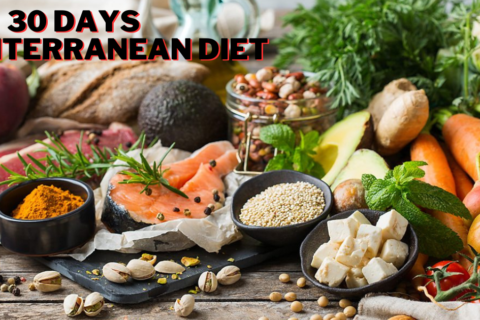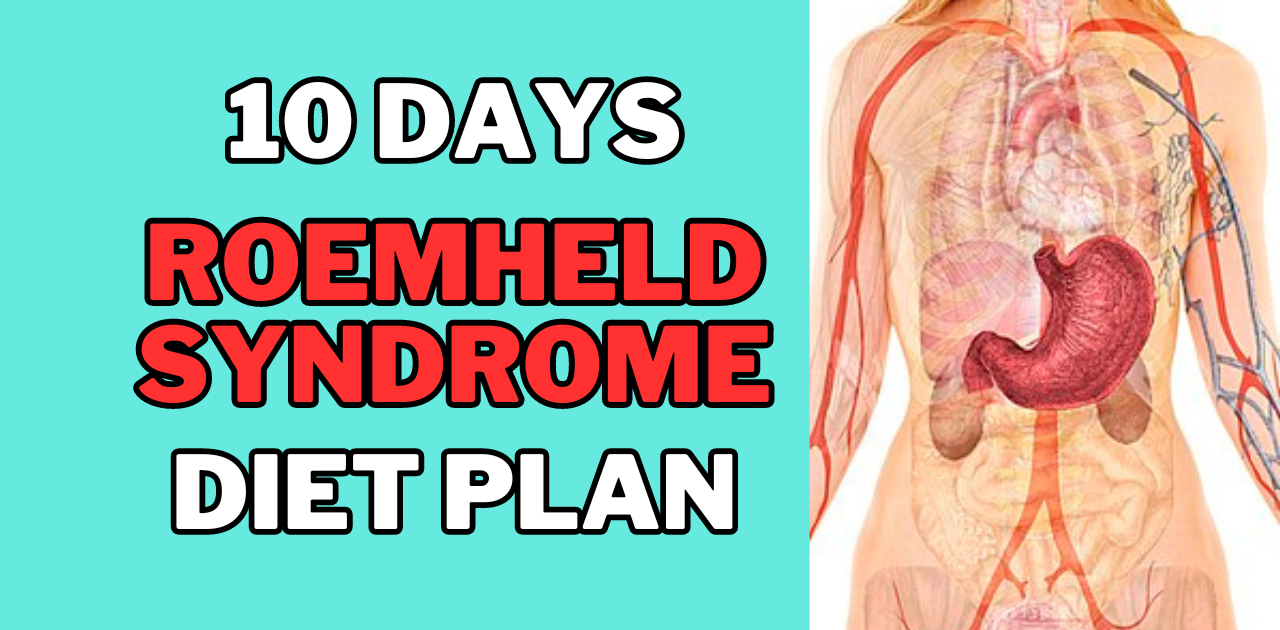Roemheld Syndrome is a condition where gastrointestinal issues influence heart symptoms, making it essential to address both aspects for effective management. The Roemheld Syndrome Diet Plan plays a crucial role in alleviating symptoms and improving overall health.
What is Roemheld Syndrome?
Roemheld Syndrome is a complex disorder characterized by a constellation of symptoms arising from the interaction between the gastrointestinal (GI) system and the cardiovascular (CV) system. It is known for causing or aggravating heart-related symptoms due to gastrointestinal issues. The condition was first identified by Ludwig Roemheld in the early 20th century, who noted that patients with GI complaints often exhibited symptoms that mimicked heart disease.
Symptoms of Roemheld Syndrome
The symptoms of Roemheld Syndrome can be varied and may overlap with those of other conditions, making diagnosis challenging. Common symptoms include:
- Chest Pain: Often described as a pressure or tightness in the chest, this symptom can be mistaken for angina or a heart attack. The pain is usually related to the digestive issues rather than a primary cardiac problem.
- Palpitations: Patients may experience irregular or rapid heartbeats, which can be distressing and mimic the sensation of a heart arrhythmia.
- Shortness of Breath: Difficulty breathing, particularly after eating or lying down, can occur as a result of pressure on the diaphragm and lungs.
- Abdominal Bloating: A feeling of fullness or swelling in the abdomen, often accompanied by discomfort or pain, is a common symptom.
- Acid Reflux: Persistent heartburn or regurgitation of stomach acids can exacerbate the symptoms and contribute to the overall discomfort experienced.
Diagnosis of Roemheld Syndrome
Diagnosing Roemheld Syndrome involves a combination of medical history, physical examination, and diagnostic tests to rule out other conditions:
- Medical History: A thorough review of the patient’s symptoms, including the onset, duration, and any potential triggers or related factors.
- Physical Examination: An evaluation of both cardiovascular and gastrointestinal symptoms to assess their correlation.
- Diagnostic Tests:
- Electrocardiogram (ECG): To rule out primary heart conditions and evaluate heart rhythm.
- Endoscopy: To examine the esophagus and stomach for signs of reflux or hernia.
- Abdominal Imaging: Such as ultrasound or CT scans, to check for gastric distension or hiatal hernia.
The primary challenge in diagnosing Roemheld Syndrome is distinguishing its symptoms from those of other cardiac and gastrointestinal disorders, which requires a careful and comprehensive evaluation by healthcare professionals.
Causes and Risk Factors of Roemheld Syndrome
Roemheld Syndrome is primarily caused by gastrointestinal issues that can exert pressure on or otherwise affect the heart and surrounding structures. Common causes include:
- Gastric Distension: An enlarged or bloated stomach can push upwards against the diaphragm, which in turn can put pressure on the heart and cause discomfort or pain.
- Acid Reflux (GERD): Chronic acid reflux can irritate the esophagus and surrounding tissues, leading to symptoms such as chest pain that may be mistaken for heart issues.
- Hiatal Hernia: This condition occurs when a portion of the stomach pushes through the diaphragm, potentially causing both digestive and cardiovascular symptoms.
Risk Factors include:
- Chronic Digestive Disorders: Conditions like gastroesophageal reflux disease (GERD) or peptic ulcers can increase the likelihood of developing Roemheld Syndrome.
- Obesity: Excess weight increases abdominal pressure, which can exacerbate GI symptoms and contribute to the development of the syndrome.
- Sedentary Lifestyle: Lack of physical activity can lead to poor gastrointestinal health and cardiovascular problems.
10 Day Roemheld Syndrome Diet Plan
Day 1
- Breakfast:Greek Yogurt with Blueberries and Chia Seeds
- Why It’s Good: Greek yogurt helps with gut health, and blueberries are easy to digest. Chia seeds add fiber and omega-3s for extra nourishment.
- Lunch:Grilled Chicken Salad
- Why It’s Good: Chicken is a lean protein that’s gentle on the stomach. Mixed greens and cucumbers add crunch without causing bloating. Olive oil dressing provides healthy fats.
- Snack:A Small Apple
- Why It’s Good: Apples are a healthy snack rich in fiber and vitamin C, but stick to small portions to avoid any discomfort.
- Dinner:Baked Salmon with Steamed Broccoli and Quinoa
- Why It’s Good: Salmon is packed with anti-inflammatory omega-3s. Broccoli is easy to digest, and quinoa offers protein and fiber without causing bloating.
Day 2
- Breakfast:Smoothie with Spinach, Banana, and Almond Milk
- Why It’s Good: This smoothie is gentle on your stomach. Spinach provides nutrients, bananas soothe digestion, and almond milk is a dairy-free option.
- Lunch:Turkey and Avocado Lettuce Wraps
- Why It’s Good: Turkey and avocado provide lean protein and healthy fats. Wrapping it all in lettuce instead of bread keeps it light and easy to digest.
- Snack:Rice Cakes with Almond Butter
- Why It’s Good: Rice cakes are a low-calorie snack, and almond butter adds satisfying healthy fats.
- Dinner:Stir-Fried Tofu with Bell Peppers and Zucchini
- Why It’s Good: Tofu is a gentle, plant-based protein. Bell peppers and zucchini are low in FODMAPs, making this a flavorful, tummy-friendly dish.
Day 3
- Breakfast:Oatmeal with Strawberries and Flaxseeds
- Why It’s Good: Oatmeal is soothing and full of soluble fiber, while strawberries add natural sweetness. Flaxseeds offer a dose of healthy omega-3s.
- Lunch:Lentil Soup with Mixed Greens Salad
- Why It’s Good: Lentils are a great source of protein and fiber, but enjoy them in moderation. A mixed greens salad keeps the meal light and nutritious.
- Snack:A Handful of Almonds
- Why It’s Good: Almonds are a satisfying snack that’s easy to digest, providing protein and healthy fats.
- Dinner:Baked Chicken Breast with Roasted Sweet Potatoes and Green Beans
- Why It’s Good: Chicken breast is lean and easy on the stomach. Sweet potatoes and green beans are low-FODMAP options that add flavor and nutrients.
Day 4
- Breakfast:Scrambled Eggs with Spinach and Gluten-Free Toast
- Why It’s Good: Eggs are a great source of protein. Spinach adds iron, and gluten-free toast keeps things easy on the digestive system.
- Lunch:Quinoa Salad with Chickpeas and Cherry Tomatoes
- Why It’s Good: Quinoa is a protein-packed grain, and chickpeas add extra protein and fiber. Cherry tomatoes give the salad a fresh, tangy flavor.
- Snack:Sliced Cucumber with Hummus
- Why It’s Good: Cucumbers are refreshing and hydrating, while hummus adds protein and healthy fats.
- Dinner:Grilled Shrimp with Steamed Asparagus and Cauliflower Rice
- Why It’s Good: Shrimp is lean and light, asparagus provides fiber, and cauliflower rice is a great low-carb, low-FODMAP alternative.
Day 5
- Breakfast:Smoothie Bowl with Kale, Frozen Berries, and Coconut Yogurt
- Why It’s Good: Kale and berries are nutrient-rich, and coconut yogurt is a dairy-free, probiotic-rich option that’s easy on the stomach.
- Lunch:Spinach and Feta Stuffed Chicken Breast
- Why It’s Good: This dish combines lean protein from chicken with the nutrients of spinach and the mild, digestible taste of feta cheese.
- Snack:A Small Pear
- Why It’s Good: Pears are fiber-rich and tasty, but if you’re sensitive, switch to a lower-FODMAP fruit like kiwi.
- Dinner:Turkey Meatballs with Zucchini Noodles and Tomato Sauce
- Why It’s Good: Turkey meatballs provide lean protein, and zucchini noodles keep it light. Opt for a simple tomato sauce without garlic or onions to avoid bloating.
Day 6
- Breakfast:Chia Pudding with Almond Milk and Sliced Bananas
- Why It’s Good: Chia pudding is rich in fiber and omega-3s, while bananas add natural sweetness. Almond milk is a gentle dairy-free option.
- Lunch:Mixed Vegetable Soup with Gluten-Free Crackers
- Why It’s Good: A light and nourishing soup with low-FODMAP vegetables, paired with gluten-free crackers, makes for a soothing meal.
- Snack:Boiled Eggs
- Why It’s Good: Boiled eggs are a perfect, easy-to-digest snack packed with protein.
- Dinner:Grilled Cod with Sautéed Spinach and Brown Rice
- Why It’s Good: Cod is a lean, light fish. Spinach and brown rice add fiber and nutrients without causing digestive issues.
Day 7
- Breakfast:Overnight Oats with Chia Seeds, Blueberries, and Honey
- Why It’s Good: Overnight oats are easy to prepare and soothing for digestion. Chia seeds add fiber, blueberries bring antioxidants, and honey provides natural sweetness.
- Lunch:Chicken Caesar Salad
- Why It’s Good: This salad is full of protein and fiber, with a gluten-free Caesar dressing to avoid any digestive discomfort.
- Snack:Carrot Sticks with Guacamole
- Why It’s Good: Carrot sticks are crunchy and low-FODMAP, while guacamole adds healthy fats and flavor.
- Dinner:Baked Turkey Breast with Mashed Sweet Potatoes and Sautéed Kale
- Why It’s Good: Turkey breast is a lean protein, sweet potatoes are gentle on the stomach, and sautéed kale provides vitamins and minerals in a digestible form.
General Tips:
- Stay Hydrated: Drinking plenty of water throughout the day helps with digestion.
- Eat Smaller Meals: Smaller, more frequent meals can help prevent bloating and discomfort.
- Watch FODMAPs: Avoid high-FODMAP foods like garlic, onions, and certain beans that might trigger symptoms.
- Listen to Your Body: Adjust the plan based on what your body tolerates best.
Visit WeightAlive to Get Weight Loss Tips
Conclusion
The Roemheld Syndrome Diet Plan is a crucial component in managing Roemheld Syndrome. By focusing on dietary adjustments that address gastrointestinal symptoms, the Roemheld Syndrome Diet Plan helps reduce associated heart symptoms and improve overall well-being. Adopting and following the Roemheld Syndrome Diet Plan can lead to significant relief from this complex condition.
 Blog
Blog30 Day Delicious Mediterranean Diet Plan
What is the Mediterranean Diet? The Mediterranean diet is a time-tested way of eating that…
August 27, 2024 0 Keto Women
Keto WomenKeto Diet for Women Over 50: Secrets to Healthy Aging
Keto Diet for Women Over 50: Secrets to Healthy Aging Aging is a natural part…
August 8, 2024 0 Mental Health Prebiotics
Mental Health Prebiotics10 best probiotics for depression and anxiety
Understanding Prebiotics and Probiotics: Prebiotics are non-digestible fibers that feed beneficial bacteria in the gut,…
August 7, 2024 0 Plant Based Prebiotics
Plant Based PrebioticsSuper Plant Based Prebiotic Foods for Gut Health
One of the lesser-discussed yet incredibly important aspects of this dietary choice is the role…
August 3, 2024 1 Comment Keto Beginners
Keto BeginnersSimple keto diet plan for beginners
The Simple keto diet plan for beginners, or keto, is a low-carb, high-fat diet that…
August 2, 2024 1 Comment

Wonderful